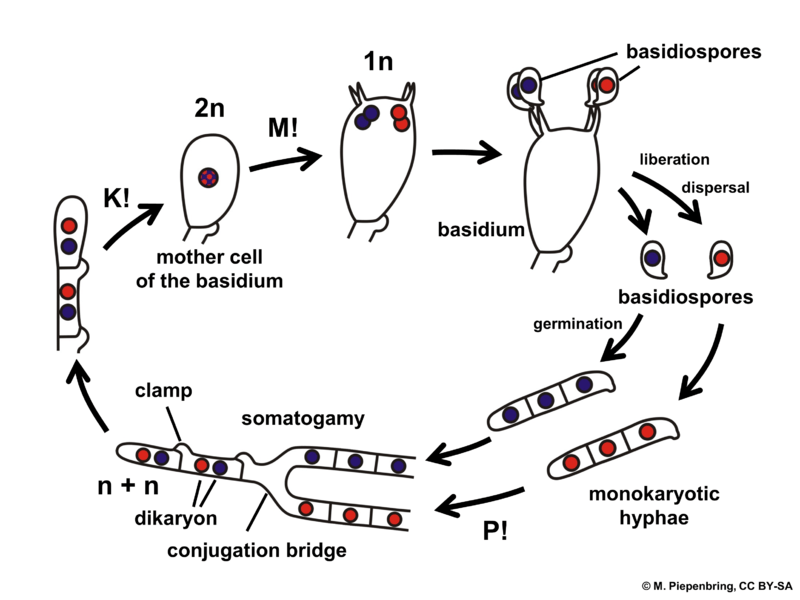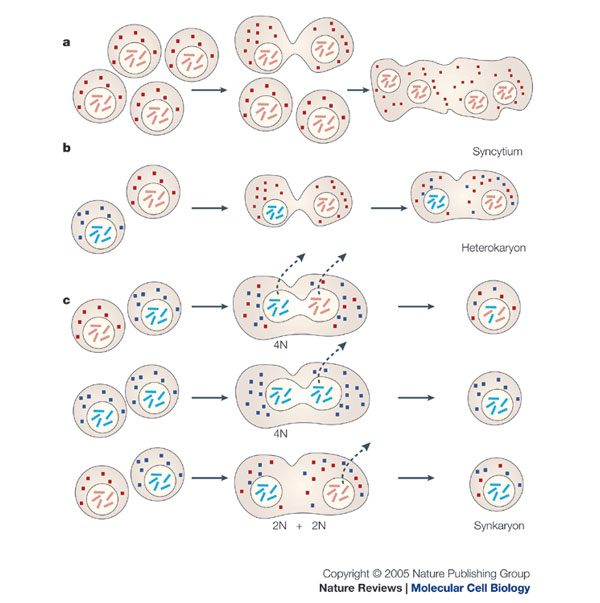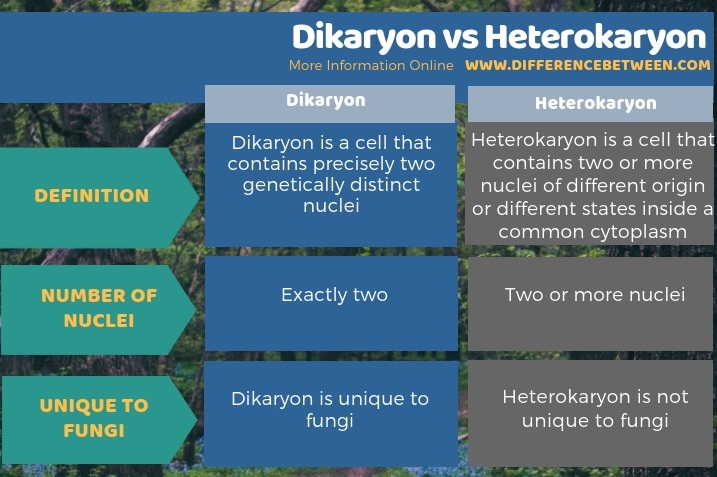Difference Between Dikaryon and Heterokaryon
Table of Contents
The key difference between dikaryon and heterokaryon is that dikaryon refers to a fungal cell that contains precisely two genetically distinct nuclei within the same cytoplasm, while heterokaryon refers to a cell that contains two or more genetically distinct nuclei inside a common cytoplasm.
Plasmogamy and karyogamy are two processes of sexual reproduction. Generally, plasmogamy occurs before karyogamy. During plasmogamy, cell membranes of the two mating type of cells fuse with each other into a common cell. During karyogamy, two genetically distinct nuclei fuse with each other. Sometimes karyogamy does not immediately follow plasmogamy. At that time, two or more nuclei exist in a common cytoplasm. Dikaryon and heterokaryon are two such states.
CONTENTS
1. Overview and Key Difference
2. What is Dikaryon
3. What is Heterokaryon
4. Similarities Between Dikaryon and Heterokaryon
5. Side by Side Comparison – Dikaryon vs Heterokaryon in Tabular Form
6. Summary
What is Dikaryon?
Dikaryon is a cell that contains exactly two genetically distinct nuclei. It is a unique feature of fungi. Dikaryon is a result of plasmogamy. Moreover, plasmogamy is the initial event of sexual reproduction seen in fungi, and it brings two nuclei close to each other for fusion.

Figure 01: Dikaryon
Plasmogamy creates a new cell stage which differs from normal haploid or diploid cell as it contains both male and female nuclei coexisting within the same cytoplasm as n+n state without merging. At this phase, the resulting cell is called a dikaryon or dikaryotic cell. Dikaryotic cell harbours a couple of nuclei from two mating types of fungi.
What is Heterokaryon?
Heterokaryon is a cell that contains two or more nuclei of different origin within a common cytoplasm. Thus, heterokaryon is a multinucleated cell. These cells are a result of the fusion of two genetically different cells. Hence, to make a heterokaryon, it is necessary to bring two different cells into contact with each other. Once they contact, their plasma membranes fuse with each other and convert into a single cell, which has a common cytoplasm. Then the cytoplasm contains both donor nuclei.

Figure 02: Heterokaryon
Heterokaryon formation is a common event in fungi during sexual reproduction. Basically, it provides a genetic variation to the mycelium. Though heterokaryons are unusual cells, their analysis is important to determine nuclear-cytoplasmic interactions and to study the influence of cytoplasmic factors on gene expression.
What are the Similarities Between Dikaryon and Heterokaryon?
- Dikaryon and heterokaryon consist of more than one genetically distinct nucleus
- Moreover, they possess only one common cytoplasm.
- They are common in fungi.
- Both dikaryon and heterokaryon are structures produced as a result of sexual reproduction.
What is the Difference Between Dikaryon and Heterokaryon?
Dikaryon has two genetically distinct nuclei within a common cytoplasm while heterokaryon has two or more genetically distinct nuclei within a common cytoplasm. So, this is the key difference between dikaryon and heterokaryon.
Moreover, dikaryon cells are unique to fungi. However, heterokaryon cells are not unique to fungi. They are seen in slime moulds as well. Therefore, we can consider this too as a difference between dikaryon and heterokaryon.

Summary – Dikaryon vs Heterokaryon
Dikaryon and heterokaryon are two types of cells that share two or more genetically distinct nuclei within a common cytoplasm. However, as their name suggests, dikaryon has precisely two nuclei in the common cytoplasm. In heterokaryon, two or more different nuclei are present in the common cytoplasm. Therefore, this is the key difference between dikaryon and heterokaryon. Also, a further difference between dikaryon and heterokaryon is that dikaryon is unique to fungi, while heterokaryon is not unique to fungi.
Reference:
1. “Heterokaryon.” Wikipedia, Wikimedia Foundation, 8 Aug. 2018, Available here.
2. Moore, David, et al. “21st Century Guidebook to Fungi, SECOND EDITION, by David Moore, Geoffrey D. Robson and Anthony P. J. Trinci.” 7.2 Formation of Heterokaryons, 1 July 2018, Available here.
Image Courtesy:
1. “03 01 07 life cycle Basidiomycota basidium (M. Piepenbring)” By M. Piepenbring – M. Piepenbring (CC BY-SA 3.0) via Commons Wikimedia
2. “CellFusionTypes” By Gargamol2000 – (CC BY-SA 4.0) via Commons Wikimedia
ncG1vNJzZmivp6x7pbXFn5yrnZ6YsqOx07CcnqZemLyue8OinZ%2Bdopq7pLGMm5ytr5Wau26wyKSYq7Gfo3qiusNmn56slae8rK3RsqanZw%3D%3D